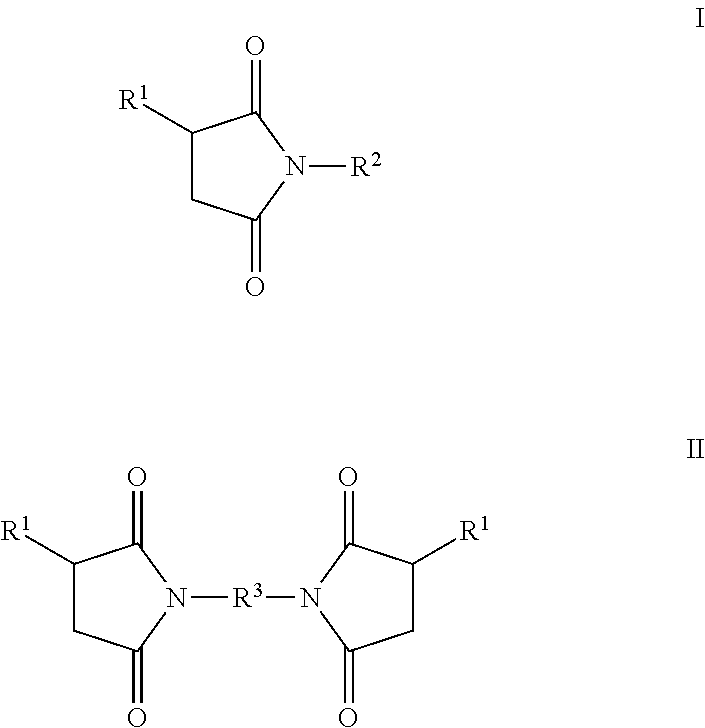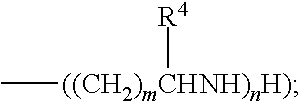Lubricating oil composition and additive therefor having improved piston deposit control and emulsion stability
a technology of additives and lubricating oil, which is applied in the direction of additives, lubricant compositions, petroleum industry, etc., can solve the problems of increasing the usage level of friction modifiers, which has been known to negatively affect the ability of lubricant compositions, and achieves the effect of improving performance properties
- Summary
- Abstract
- Description
- Claims
- Application Information
AI Technical Summary
Benefits of technology
Problems solved by technology
Method used
Image
Examples
example 1
[0092]The set-up requires a 1 L 4-neck flask with agitator, addition funnel, temperature probe, temperature controller, heating mantle, Dean-Stark trap, and a condenser. The flask was charged with 2100 Mn polyisobutylene succinic anhydride (PIBSA) (195.0 g; 0.135 mole) and heated to 160° C. under a nitrogen blanket. Polyethylene amine mixture (21.17 g; 0.112 mole) was added drop-wise over 30 min. The reaction mixture was allowed to stir for 4 hours and then was vacuum stripped for 1 hour at 711 mm Hg. Process oil (172.0 g) was added and the mixture was stirred for 15 minutes. 1,8-Naphthalic anhydride (13.39 g; 0.068 mole) was added in one portion at 160° C. The reaction mixture was heated to 165° C. and allowed to stir for 4 hours. Vacuum was applied (711 mm Hg) for 1 hour to remove any residual water. The reaction product was pressure filtered over Hiflow Super Cel Celite to yield 364 g of a dark brown viscous liquid (% N, 1.75; TBN, 36.0).
[0093]A 500 mL flask was charged with the ...
PUM
| Property | Measurement | Unit |
|---|---|---|
| molecular weight | aaaaa | aaaaa |
| molecular weight | aaaaa | aaaaa |
| number average molecular weight | aaaaa | aaaaa |
Abstract
Description
Claims
Application Information
 Login to View More
Login to View More - R&D
- Intellectual Property
- Life Sciences
- Materials
- Tech Scout
- Unparalleled Data Quality
- Higher Quality Content
- 60% Fewer Hallucinations
Browse by: Latest US Patents, China's latest patents, Technical Efficacy Thesaurus, Application Domain, Technology Topic, Popular Technical Reports.
© 2025 PatSnap. All rights reserved.Legal|Privacy policy|Modern Slavery Act Transparency Statement|Sitemap|About US| Contact US: help@patsnap.com



